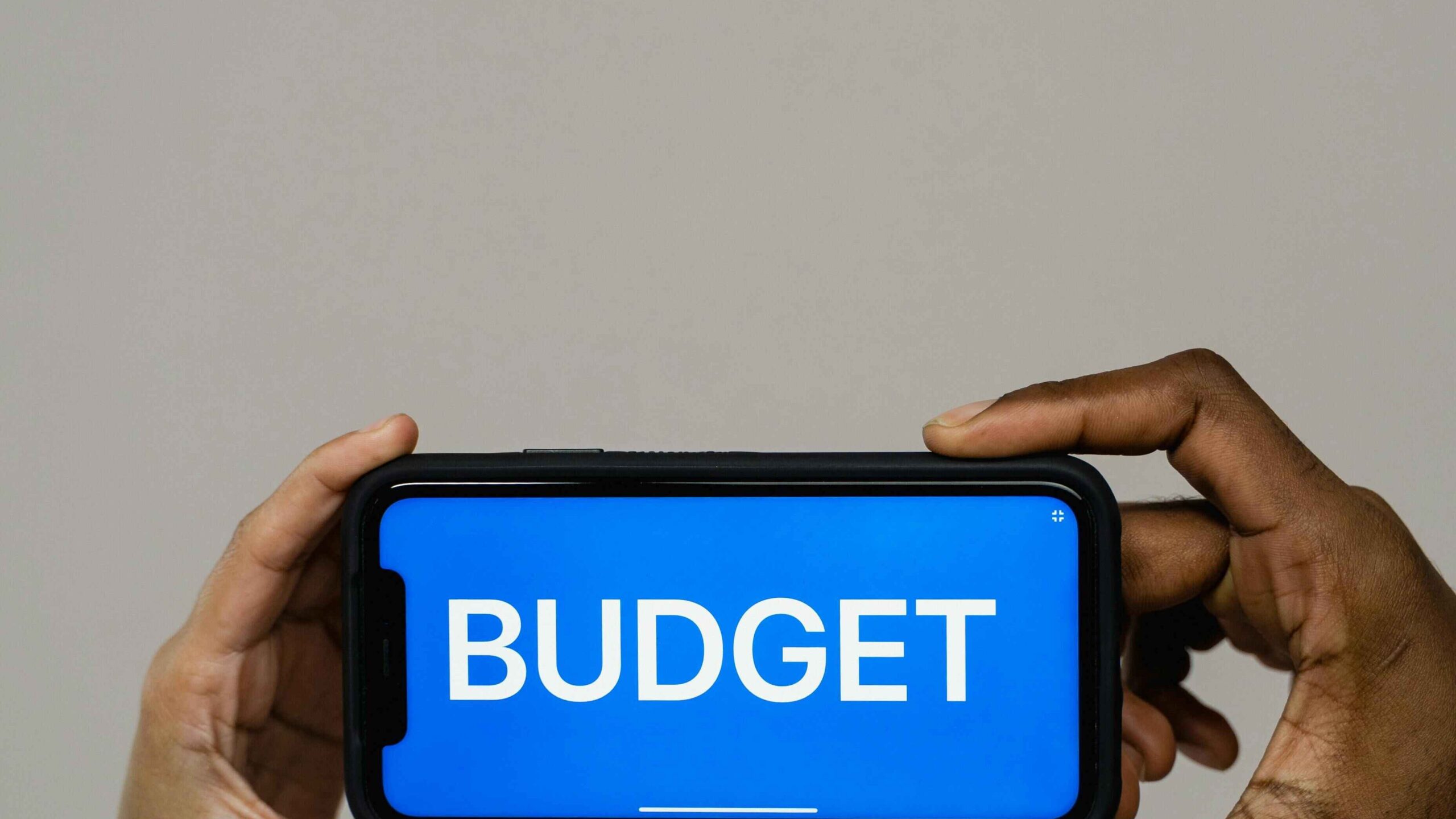Whether you’re a billionaire or someone from the middle class, one thing remains constant: the curiosity to save money. It’s ingrained in human nature to want to save more, invest more, and grow wealth over time. Interestingly, these two concepts “saving and investing” are deeply interconnected. If you’re not saving, it becomes nearly impossible to invest.
As the saying goes, “If you can’t save, you should forget about investing.” This simple yet powerful truth underscores a fundamental reality: without saving, you’ll likely remain stuck in the same financial place, year after year, with little progress toward financial freedom. So the first thing a person can do towards his future should be to know the answer to “How to stop spending money “
Here we have 13 Clever and Fun Ways for you to stop spending money but before that what if someone asked you about “Groceries or restaurants: where are Americans spending more money? That looks like an obvious answer as groceries are the main items to spend your money but according to Next Generation Personal Finance Americans spend more than groceries on restaurants

Tip 01: Use the “72-Hour Rule” for Non-Essential Purchases
The “72-Hour Rule” is a simple trick to help you avoid impulse buying. Before purchasing something you don’t need, wait for 72 hours. This gives you time to cool off and think about whether you truly want or need the item. Often, the excitement wears off, and you realize it’s not worth spending your money on.
For instance, that cute sweater you were eyeing? After three days, you might notice it doesn’t even match anything in your closet or worse, you already own something similar! By waiting, you save money and avoid buyer’s remorse. It’s like giving yourself a little breather before making a decision
Related topics to read
- Financial literacy books:6 best Books to Master Money Management
- “Generational Wealth and How to Build It: A Complete 5-Step Guide to Creating a Lasting Legacy”
Tip 02: Turn Shopping into a Game
Turn saving money into a fun game by setting challenges for yourself, like “No-Spend Days” or “$0 Grocery Weeks.” The idea is to make it exciting and rewarding. For example, challenge yourself to go a whole week without spending on non-essentials, and if you stick to it, treat yourself to something small, like a movie night or your favourite snack.
It’s all about creating little victories that keep you motivated. Plus, seeing how much you can save by cutting back on unnecessary expenses feels like winning! This way, you’re not just saving money—you’re having fun while doing it.
Tip 03: Unsubscribe from Tempting Emails
Marketing emails are designed to tempt you into spending money you hadn’t planned to. They often create a sense of urgency with phrases like “limited-time offer” or “exclusive deal,” making it hard to resist impulse buys. The best way to avoid this trap? Unsubscribe from those emails altogether.
Here’s how you can do it:
- Manually Unsubscribe: Scroll to the bottom of the email, look for the “Unsubscribe” link (usually in small print), and click it. Confirm any prompts that follow.
- Use Tools for Bulk Cleanup: Try tools like Unroll.me if your inbox is flooded. It scans all your subscriptions and lets you unsubscribe from multiple lists at once with just a few clicks.
- Create Email Filters: For emails you don’t want to fully unsubscribe from, set up filters to automatically move them to a “Promotions” folder so they don’t clutter your main inbox.
By clearing out these distractions, you’ll not only save money but also feel less pressured to shop impulsively. Fewer emails
Tip 04: Create a “Joy Budget” Instead of Cutting Everything

Instead of cutting out all your favourite little luxuries, create a “Joy Budget”—a small portion of your spending dedicated to things that truly make you happy. This way, you can still enjoy life’s pleasures without feeling deprived or guilty.
For example, if you’re a coffee lover, allow yourself one fancy latte per week instead of swearing off coffee shops entirely. Or, if you love books, set aside a small amount each month for a new read. By planning for these treats, you’ll feel more in control of your budget while still indulging in what brings you joy. It’s all about balance! 😊
Tip 05: Shop with a List (and Stick to It!)
One of the simplest yet most effective ways to avoid impulse purchases is to shop with a list—and stick to it. Planning gives you clarity about what you truly need, helping you stay focused and resist those tempting but unnecessary items that catch your eye. Whether you’re grocery shopping or browsing online, having a clear plan keeps your spending intentional.
Here’s a fun twist: Use apps like Microsoft To Do or Google Keep to make your shopping lists more interactive. These apps let you share your lists with friends or family, adding a layer of accountability. For instance, if your partner knows you’re trying to stick to a budget, they can gently remind you to skip the extra pair of shoes or snacks that aren’t on the list. Plus, shared lists are great for household shopping—everyone can add what they need, so nothing gets forgotten, and no one goes rogue with unplanned buys!
By sticking to your list, you’ll not only save money but also feel more in control of your shopping habits. It’s like permitting yourself to say “no” to distractions while staying on track with what matters.
Tip 06: Freeze Your Credit Card (Literally!)
If you’re serious about curbing impulsive online shopping, here’s a quirky yet effective trick: freeze your credit card—literally! Place it in a cup of water and pop it in the freezer. The idea is that by the time the ice melts (or you go through the effort to defrost it), the urge to make that impulse purchase will have passed. It’s a fun, physical way to create a barrier between you and unnecessary spending.
For those who prefer a less messy approach, many banking apps now offer digital alternatives to “freeze” your card with just a tap. You can temporarily lock your card whenever you feel the temptation to shop and unlock it only when you’re making a planned purchase. It’s like having an on-off switch for your spending!
Whether you go old-school with ice or high-tech with an app, these tricks help you pause and rethink before spending. Plus, they add a little humour and intentionality to managing your money. 😊

Tip 07: Track Every Dollar You Spend
Tracking every dollar you spend is a game-changer when it comes to managing your money. It helps you see exactly where your money is going and identify areas where you can cut back. To make it easy, use budgeting apps like Mint or YNAB (You Need A Budget) —they automatically categorize your spending and give you a clear picture of your financial habits. If apps aren’t your thing, a simple spreadsheet works just as well!
To make tracking more engaging, turn it into a fun challenge: categorize every expense as a “Need,” “Want,” or “Waste.” For example, groceries? That’s a “Need.” A fancy dinner out? Probably a “Want.” That random gadget you bought and never used? Yep, that’s a “Waste.” Seeing your spending broken down this way can be eye-opening and even a little entertaining. It also helps you spot patterns, like how many “Wants” or “Wastes” sneak into your budget.
The more aware you are of your spending, the easier it becomes to make smarter choices. Plus, there’s something oddly satisfying about knowing exactly where every dollar goes! 😊
Tip 08: Adopt a Minimalist Mindset
Adopting a minimalist mindset can transform the way you think about spending. When you declutter your home, you start to realize how much you already own—and how little you use. This awareness naturally makes you more intentional about what you bring into your life. Instead of chasing the next purchase, you focus on quality over quantity and value experiences over things.
Here’s a fun twist: Host a “reverse shopping day.” Instead of buying new items, go through your home and gather things you no longer need or use. Then, donate them to someone who could benefit. It’s like shopping in reverse! Not only does this help others, but it also reinforces the idea that letting go of stuff can feel just as rewarding (if not more) than acquiring it.
By embracing minimalism, you’ll find yourself buying less, saving more, and appreciating what truly matters. Plus, a clutter-free space feels amazing—it’s like giving your mind a fresh start along with your wallet! 😊
Tip 09: Set Up Automatic Savings Transfers
Setting up automatic savings transfers is one of the easiest ways to prioritize your financial goals. By scheduling regular transfers from your checking account to your savings, you ensure that you “pay yourself first” before you have a chance to spend that money elsewhere. It’s like giving your future self a gift every time you get paid.
Here’s a fun twist to keep you motivated: Name your savings account something inspiring or specific, like “Dream Vacation Fund,” “Future Millionaire Account,” or even “Emergency Cash Cushion.” Seeing that name pop up in your banking app can remind you of what you’re working toward and make saving feel more personal and exciting. Plus, it’s harder to dip into a fund with a meaningful name when you’re tempted to overspend!
Automating your savings takes the effort out of being disciplined—it happens without you having to think about it. Over time, those small, consistent contributions can add up to big results. And who knows? That “Dream Vacation Fund” might get you to Bali sooner than you think! 😊
Tip 10: Practice Gratitude for What You Already Have
Practising gratitude can be a powerful tool to curb the desire for constant shopping. When you focus on appreciating what you already have, it shifts your mindset from “I need more” to “I have enough.” A great way to do this is by keeping a gratitude journal where you regularly write about the things you’re thankful for—whether it’s your cosy sweater, your reliable car, or even your favourite mug.
Here’s a fun exercise: Every time you feel the urge to shop, pause and write down three things you’re grateful for instead. This simple act helps redirect your energy and reminds you of the abundance already in your life. Over time, you’ll find that the impulse to buy fades as you cultivate a deeper sense of contentment.
Gratitude isn’t just good for your wallet—it’s good for your mind too. By focusing on what you have, you’ll feel richer in ways money can’t buy. 😊
Tip 11: Limit Exposure to Social Media Influencers

Social media influencers often showcase lifestyles and products that seem aspirational but are usually unrealistic. They can make it feel like you need the latest gadgets, trendy outfits, or luxury vacations to be happy or successful. This constant exposure can fuel unnecessary spending and leave you feeling like you’re not enough unless you buy into these ideals.
Here’s what you can do: Take a few minutes to mute or unfollow accounts that make you feel pressured to spend or that trigger feelings of inadequacy. Instead, fill your feed with content that inspires positivity, mindfulness, or practical advice—things that align with your real values and goals.
By taking control of who you follow, you’ll create a healthier, more intentional online space. Over time, you’ll notice fewer urges to impulse buy and more appreciation for what truly matters in your life. After all, your worth isn’t defined by what you own! 😊
Tip 12: Try the “Cash-Only Challenge”
If you’re looking for a simple way to curb overspending, try the “Cash-Only Challenge.” The idea is to withdraw a set amount of cash for discretionary spending—like dining out, entertainment, or small luxuries—and leave your credit or debit cards at home. When you see your money physically leaving your hands, it makes spending feel more real and intentional.
Here’s a fun fact to keep in mind: Studies show that people spend 12–18% less when using cash instead of cards. That’s because parting with cash feels more tangible and emotionally impactful than swiping a card, which can sometimes feel like “invisible” money.
The challenge also helps you stick to a budget since you can’t spend more than the cash you’ve allocated. Once it’s gone, it’s gone! It’s a great way to become more mindful of your spending habits while keeping your financial goals on track. Plus, there’s something satisfying about watching your savings grow as you resist the urge to reach for plastic. 😊
Tip #13: Visualize Your Future Self
Visualizing your future self is a powerful way to stay motivated about saving money. Take a moment to imagine how your future self would feel if you were saved today—whether it’s the freedom of travelling, the security of owning a home, or simply the peace of mind that comes with having a financial safety net. When you connect your current choices to the life you want later, it becomes easier to resist impulse spending.
Here’s a creative way to make this vision more tangible: Create a vision board filled with pictures and words that represent your financial goals. Include images of places you dream of visiting, homes you’d love to own, or even a simple jar labelled “Emergency Fund.” Place the board somewhere you’ll see it often, like your bedroom wall or as your phone wallpaper. Every time you look at it, you’ll be reminded of why saving matters.
By keeping your goals front and centre, you’ll feel inspired to prioritize your future self over short-term temptations. After all, the choices you make today are gifts to the person you’re becoming tomorrow! 😊
Conclusion:
To wrap it all up, stopping unnecessary spending doesn’t mean giving up happiness—it’s about making smarter choices and prioritizing what truly matters. From using the “72-Hour Rule” to gamifying your savings, creating a “Joy Budget,” or even freezing your credit card (literally!), these 13 tips are designed to help you take control of your finances while still enjoying life’s little pleasures. Whether it’s tracking every dollar, practising gratitude, or visualizing your future self, each step brings you closer to financial freedom.
Remember, it’s not about deprivation—it’s about intention. Every small action you take today sets the foundation for a brighter tomorrow. As you move forward, keep this motivational quote in mind:
“Every dollar saved is a step closer to the life you want.”
So take that step—your future self will thank you! 😊



1 thought on “How to Stop Spending Money: 13 Clever and Fun Ways to Save More”